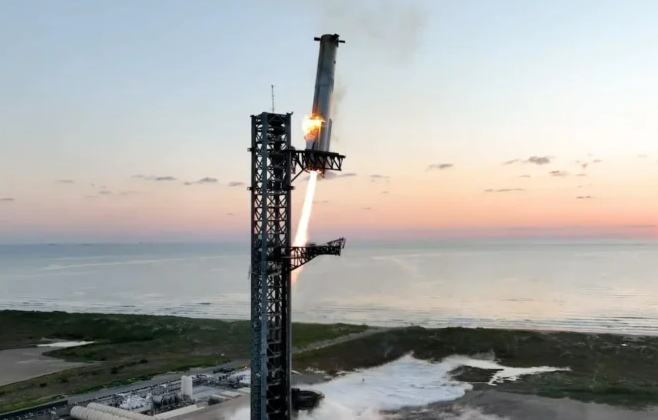
©Anadolu via Getty Images
Pre-reading questions:
I will read each question. Then, please answer them.
- What is the purpose of a rocket test flight?
- What safety measures do you think are important during a rocket test flight?
Vocabulary:
I will read the words, meanings, and sample sentences. Then, repeat after me.
- flight /flahyt/
- procedure /pruh-SEE-jer/
- improved /uhm-PROOVD/
- program /PROH-gram/
- aspire /uh-SPAHYUR/
[noun] – the act of flying; a journey made by flying
The flight to Tokyo takes about twelve hours.
[noun] – a set of actions that are done in a certain way
The procedure for making the cake is simple and quick.
[adjective] – made better or enhanced
She has an improved score on her math test compared to last time.
[noun] – a plan of activities or a set of related tasks
The school launched a new program to help students learn coding.
[verb] – to have a strong desire to achieve something
Many students aspire to become doctors after finishing school.
Article reading:
Please read the whole article. Then, I will check your pronunciation and intonation.
On October 13, 2024, SpaceX marked a significant milestone by conducting a successful test flight of its Starship rocket. The launch occurred at sunrise from the southern tip of Texas, close to the Mexican border. The nearly 400-foot (121-meter) tall Starship executed a remarkable landing procedure, which included catching the returning booster with mechanical arms at the launch pad. Unlike previous attempts that resulted in failures, this flight showcased notable advancements in technology. The CEO of SpaceX, Elon Musk, expressed enthusiasm for this accomplishment, highlighting it as “science fiction without the fiction part.” This test flight indicated improved capabilities, particularly in landing procedures, which are vital for future missions to the moon and Mars.
Following liftoff, the booster returned to the launch pad approximately seven minutes later, guided by the flight director’s careful supervision. The mechanical arms, nicknamed “chopsticks,” secured the booster, representing a pivotal moment in space exploration. According to NASA Administrator Bill Nelson, this advancement is essential for NASA’s Artemis program, which intends to return astronauts to the moon’s south pole. Continued testing of the Starship is necessary to achieve this ambitious objective. Meanwhile, the Starship spacecraft ascended over 130 miles (212 kilometers) before landing successfully in the Indian Ocean, proving its operational viability. SpaceX aspires to replicate successful booster recovery practices, utilizing the Starship’s 33 methane-fueled engines, which characterize the largest and most powerful rocket ever constructed.
Following liftoff, the booster returned to the launch pad approximately seven minutes later, guided by the flight director’s careful supervision. The mechanical arms, nicknamed “chopsticks,” secured the booster, representing a pivotal moment in space exploration. According to NASA Administrator Bill Nelson, this advancement is essential for NASA’s Artemis program, which intends to return astronauts to the moon’s south pole. Continued testing of the Starship is necessary to achieve this ambitious objective. Meanwhile, the Starship spacecraft ascended over 130 miles (212 kilometers) before landing successfully in the Indian Ocean, proving its operational viability. SpaceX aspires to replicate successful booster recovery practices, utilizing the Starship’s 33 methane-fueled engines, which characterize the largest and most powerful rocket ever constructed.
Comprehension questions
I will read each question. Then, please answer them based on the article.
- What significant milestone did SpaceX achieve on October 13, 2024?
- Where did the launch of the Starship rocket take place?
- What was notable about the Starship’s landing procedure?
- How tall is the Starship rocket?
- What did Elon Musk express about the successful test flight?
Discussion questions
I will read each question. Then, please answer them.
- Have you ever experienced a rocket launch or seen one in person? If so, what was your impression of it? If not, what do you think it would be like?
- Do you enjoy watching documentaries or movies about space exploration? If so, what is your favorite one? If not, what kind of shows do you prefer instead?
- Do you agree that advancements in space technology will benefit future generations?
- What are the potential risks and benefits of space travel for humans? How should these factors influence future missions?
- Why do you think people are so fascinated by space exploration and technology? What does this fascination say about human curiosity and innovation?